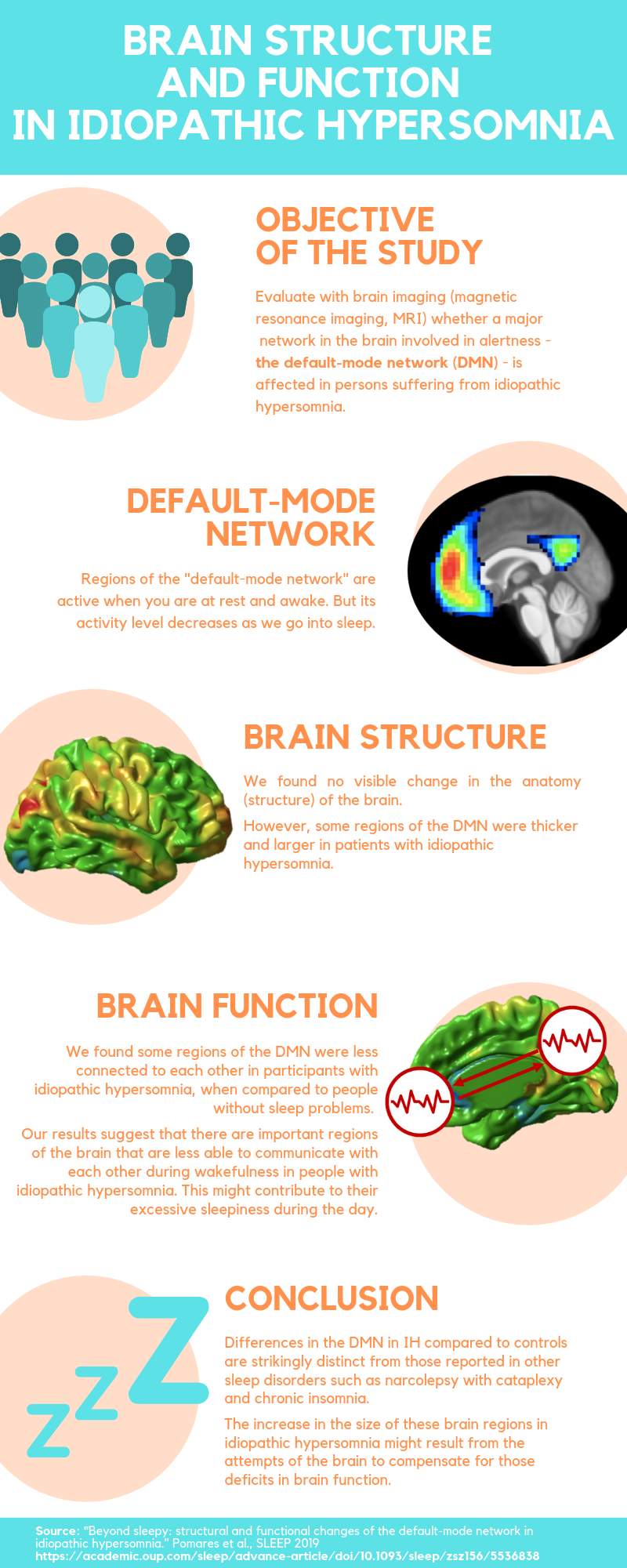SomnusNooze
 HF MAB member Dr. Thien Thanh Dang-Vu
HF MAB member Dr. Thien Thanh Dang-Vu
Have you ever wondered whether your cognition and memory are affected by your idiopathic hypersomnia (IH)? A new study reveals the answer is “YES.” In a recent study by HF MAB member Dr. Thien Thanh Dang-Vu and his colleagues, neuroimaging techniques demonstrate that the “default-mode network” – a major brain network involved in alertness and sleep – is affected in people with IH. Their findings suggest that, in people with IH, there are important regions of the brain that are less able to communicate with each other, which might contribute to excessive sleepiness during the daytime.
Previously, in 2017, Dr. Dang-Vu and his colleagues used single photon emission computed tomography (SPECT) to demonstrate that regional cerebral blood flow was lower in certain regions of the brain in people with IH compared to controls. (Their 2017 findings correlated with objective and self-reported measures of sleepiness, pointing to the involvement of the “default mode network” or “DMN,” a key network of the brain that is involved in higher cognition, memory and emotions, as well as alertness and sleep. Read more about the 2017 findings HERE).
In this most recent study, the researchers conducted MRIs on 12 participants with IH and 15 “good sleeper” controls, to determine whether there were structural and functional differences (including connectivity between various regions of the brain) in the DMN of participants with IH compared to good sleepers (see “Beyond Sleepy: structural and functional changes of the default-mode network in idiopathic hypersomnia”).
As shown in the infographic below (prepared by Dr. Florence B. Pomares, one of Dr. Dang-Vu’s colleagues on this study), the researchers concluded that there was no visible change in the anatomy (structure) of the brain, but that some regions of the DMN were thicker and larger in people with IH. Moreover, the researchers found that some regions of the DMN were less connected to each other in people with IH, when compared to the good-sleeper controls. These results suggest that there are important regions of the brain that are less able to communicate with each other during wakefulness in people with IH, and that this might contribute to their excessive sleepiness during the daytime. The researchers also suggested that the increase in the size of certain brain regions in people with IH might result from the attempts of the brain to compensate for those deficits in brain function.
Perhaps most surprising, the researchers concluded that “differences in the DMN in IH compared to controls are strikingly distinct from those reported in other sleep disorders such as narcolepsy with cataplexy and chronic insomnia.” (emphasis added)
IF YOU WOULD LIKE TO LEARN MORE about this study, please join us at our Patient Education Meeting in Chicago on October 19th, where Dr. Dang-Vu will be one of our featured speakers. (The HF also thanks Dr. Pomares for her work on this study and for graciously preparing the infographic.)

